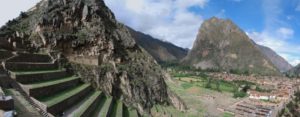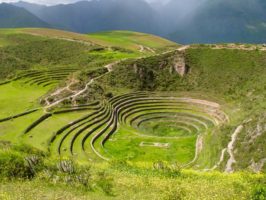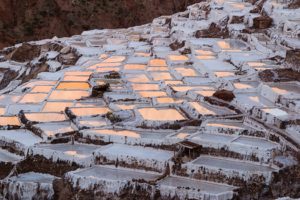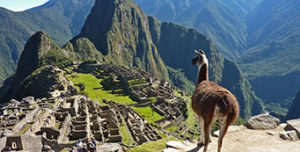The Sacred Valley of the Incas is a long, fertile valley that lies between Cusco and Machu Picchu, Peru. The Sacred Valley has been the center of agriculture since Inca times. The Incas inhabited this valley over 500 years ago and the remaining archaeological sites are a testament to the their rich and busy lives. They built fortresses, agricultural terraces, temples, palaces and citadels – all of which can be experienced today.
Join us and the guides to learn about the the history and culture of these iconic Inca landmarks during our tour:
Culinary Peru & Machu Picchu
April 26 – May 4, 2017
 Ollantaytambo Ruins
Ollantaytambo Ruins
Ollaytaytambo is both a village and a spectacular Inca archeological site in the Sacred Valley. Built by the Incas as a fortress/temple/palace (no one really knows the reason), it is made of steep terraces guarding a ceremonial platform at the top. The terraces were thought to have been used for agriculture and protection. At the top, lies the ‘Temple of the Sun’, an unfinished construction in front of a wall of enormous boulders. The rock work from both the cut stones (some over 20 feet high) and the field stones is amazing as well as the question of how the Incas were able to transport and build this on a hillside.
 Moray Agricultural Terraces
Moray Agricultural Terraces
The ampitheater-like arrangement of Moray’s concentric terraces may appear as an elegant display of architectural simplicity, but according to some theories, their range of widths and depths within the earth resulted in each terrace having a unique agricultural microclimate. These distinctive microclimates allowed ancient farmers to test crops and determine optimal growing conditions. With a 15 degree Celsius (59 degree Fahrenheit) difference from top to bottom, a range of crops were grown on the terraces to determine what and how to grow best.
 Salt Pans of Maras
Salt Pans of Maras
Maras is a small town the Sacred Valley well-known for its salt evaporation ponds in use since Inca times. A natural spring feeds a salt-rich stream that flows down a hillside into several thousand ‘pans’. Salt was harvested by the Incas and is still harvested today. The light pink hue of the water in the pans is alluring as is the site itself.
 Machu Picchu
Machu Picchu
The breathtaking Inca citadel of Machu Picchu is a UNESCO World Heritage Site and one of the Seven Wonders of the World. Machu Picchu is believed to have been a royal estate or sacred religious site for Inca leaders. The site stretches over 5 miles and features more than 3,000 stone steps that link its many different levels. its giant walls, terraces and ramps seems as if they have been cut naturally in the continuous rock escarpments. Located on the eastern slopes of the Andes, it is South America’s most famed creation of the Inca Empire.